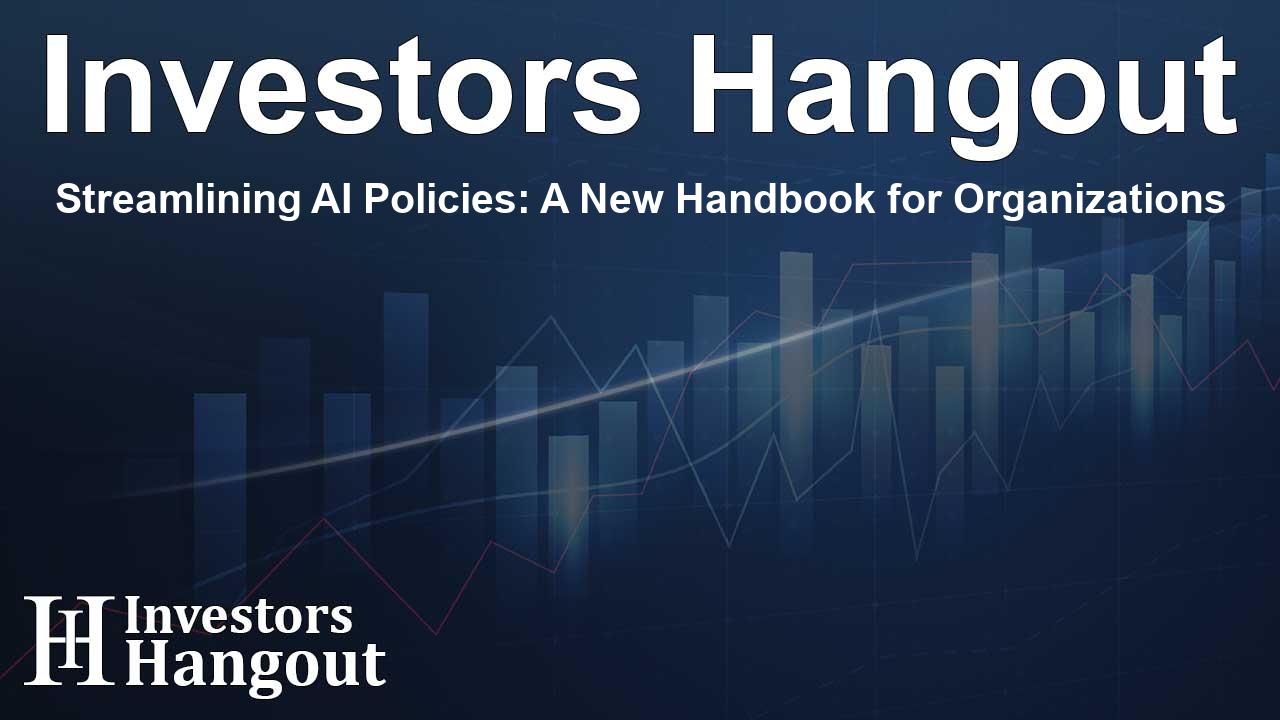Streamlining AI Policies: A New Handbook for Organizations

Understanding the New Handbook for AI Risk Management
In today's digital landscape, the management of artificial intelligence (AI) risks is more crucial than ever. A new resource has been unveiled that promises to guide organizations in navigating these challenges effectively. Titled "Internal Policies for Artificial Intelligence Risk Management," this handbook is a significant step towards helping organizations establish robust AI governance.
Key Features of the Handbook
This handbook provides a solid foundation for organizations of all sizes to create and implement effective governance and risk management policies related to AI. With over 175 meticulously crafted internal policies included, organizations can easily tailor these to fit their specific needs. Understanding the complexities of AI is vital, and this resource is designed to alleviate some of the burdens companies face in policy formulation.
How It Works
Instead of starting from scratch, organizations can simply select, customize, and compile the ready-to-deploy materials provided. This not only saves time but also ensures that the policies are based on best practices derived from extensive research. The handbook effectively combines practical approaches to create accessible policy documents that organizations can trust.
Addressing Common Misconceptions about AI
A central theme of this handbook is the need to debunk the myth that AI can wholly replace human involvement in decision-making processes. Many managers mistakenly believe that AI systems possess capabilities like common sense or emotional understanding. The handbook emphasizes that while AI can enhance productivity, it lacks crucial human characteristics. By embracing collaborative strategies, human workers can work alongside AI systems to maximize efficiency.
Building User Trust
The handbook also discusses the importance of building trust among users towards AI integrations. Gaining trust is paramount for widespread adoption of AI solutions. When users feel secure in the reliability of AI, they are more likely to engage with AI-driven projects and the products that rely on them.
The Importance of the AI Life Cycle Process
The handbook delves into the AI life cycle process, which outlines the necessary stages for evaluating and managing risks associated with AI development and deployment. This process ensures that AI initiatives are thoroughly assessed for risks, equipped with appropriate safeguards, and compliant with relevant regulations. Drawing parallels with other high-stakes industries, the handbook proposes a comprehensive approach that encompasses ethics, governance, and organizational culture to foster a supportive framework for AI integration.
Ensuring Compliance and Governance
Compliance is another area addressed within the handbook. As AI continues to evolve, keeping abreast of legal standards and ethical guidelines is crucial. The provided policies are structured to include mechanisms which facilitate regular audits and assessments, ensuring that organizations maintain adherence to best practices and regulatory requirements.
About the Author
This valuable resource is authored by Charles Cresson Wood, Esq., JD, MBA, MSE, CISA, CISSP, CISM, CGEIT, CIPP/US. With over 45 years of experience, Mr. Wood has a wealth of knowledge in information technology risk management. His prior work, including the widely recognized book "Information Security Policies Made Easy," has been instrumental for many Fortune 500 companies. His deep understanding of the risks associated with technology gives this handbook exceptional credibility.
A Reliable Resource for Organizations
This handbook is entirely self-funded, which allows for an unbiased viewpoint focused on users' perspectives. Notably, the writing emphasizes the importance of human oversight, as employing AI to draft internal policies could lead to discrepancies in risk management strategies.
Frequently Asked Questions
What is the purpose of the handbook?
The handbook serves to provide organizations with ready-to-use policies that govern AI risk management, allowing for easier implementation and customization.
Who is the intended audience for this handbook?
It is designed for organizations of all types looking to improve their AI governance, including businesses, non-profits, and government agencies.
How does this handbook help with compliance?
By providing structured policies that include auditing and compliance mechanisms, organizations can ensure adherence to legal and ethical standards related to AI use.
Why is user trust important in AI integration?
User trust is critical because it encourages participation in AI projects and facilitates acceptance of AI-enhanced products and services.
What are the credentials of the author?
Charles Cresson Wood has extensive experience in IT risk management and has authored several well-regarded resources in the field, enhancing the credibility of this handbook.
About Investors Hangout
Investors Hangout is a leading online stock forum for financial discussion and learning, offering a wide range of free tools and resources. It draws in traders of all levels, who exchange market knowledge, investigate trading tactics, and keep an eye on industry developments in real time. Featuring financial articles, stock message boards, quotes, charts, company profiles, and live news updates. Through cooperative learning and a wealth of informational resources, it helps users from novices creating their first portfolios to experts honing their techniques. Join Investors Hangout today: https://investorshangout.com/
Disclaimer: The content of this article is solely for general informational purposes only; it does not represent legal, financial, or investment advice. Investors Hangout does not offer financial advice; the author is not a licensed financial advisor. Consult a qualified advisor before making any financial or investment decisions based on this article. The author's interpretation of publicly available data shapes the opinions presented here; as a result, they should not be taken as advice to purchase, sell, or hold any securities mentioned or any other investments. The author does not guarantee the accuracy, completeness, or timeliness of any material, providing it "as is." Information and market conditions may change; past performance is not indicative of future outcomes. If any of the material offered here is inaccurate, please contact us for corrections.
Recent Articles
- Insperity Reports Q3 Earnings Growth Amid Industry Shifts
- Elektrofi Raises $112.25 Million to Boost GMP Manufacturing
- Unlocking Opportunities: PermitUsNow's Insights for Small Businesses
- Money20/20 USA 2024: Unveiling Fintech Innovations for All
- ClearValue Consulting Partners with Restb.ai for Advanced Appraisals
- Truck Freight Volume and Spending Show Signs of Stabilization
- Taiwan Semiconductor's Stock Performance Amid Challenges
- Core PCE Price Index Reveals Steady Consumer Spending Growth
- Navigating the Changes in Medicare Part D Premiums for 2025
- Federal Reserve's Inflation Metric Shows Expected Slowdown to 2.1%
- Discover Affirm's Upcoming Investor Conferences and Goals
- Investigation into TKO Group Holdings, Inc. for Fiduciary Breaches
- US Jobless Claims Drop Signals Economic Strength and Growth
- Understanding Distribution Sources for Western Asset Fund
- Enhancements in Oracle Health Data Intelligence for Better Healthcare
- Roblox Boosts Forecasts, Shares Surge Amid Growing User Engagement
- Wells Fargo's CFO to Address the BancAnalysts Conference Soon
- Global Dialogue on Russian Disinformation and Faith Freedoms
- Digital Strategies Enhance Advisor-Manager Relationships
- Rosenblatt Raises Fortinet Target: A Positive Outlook for Cybersecurity









